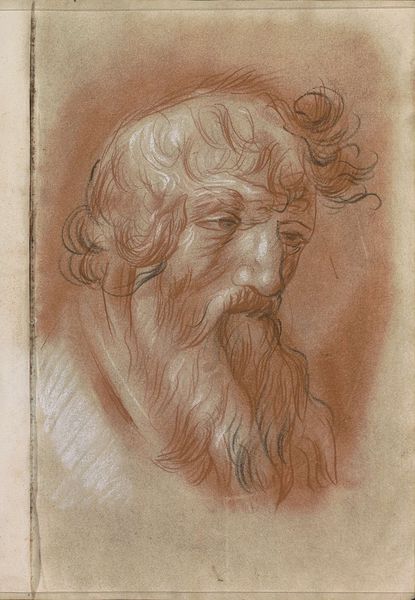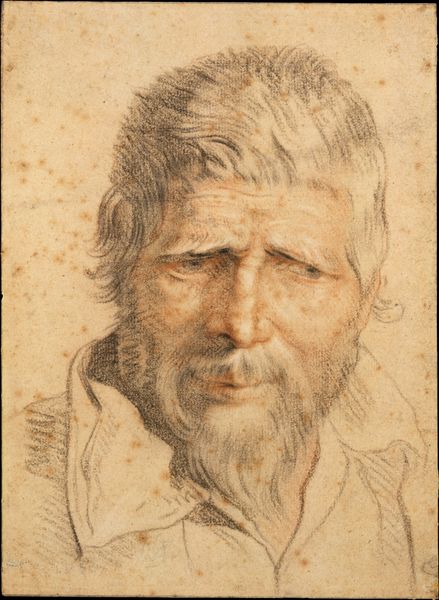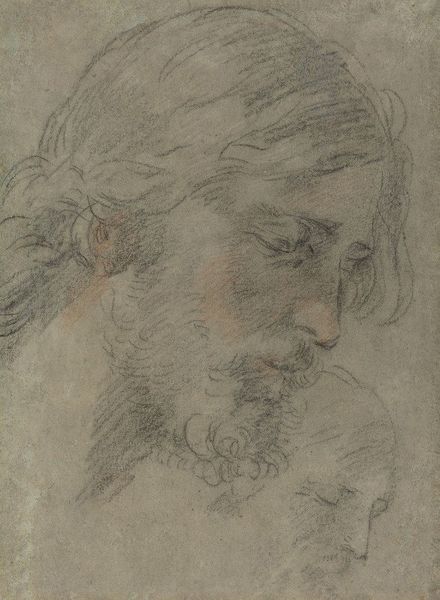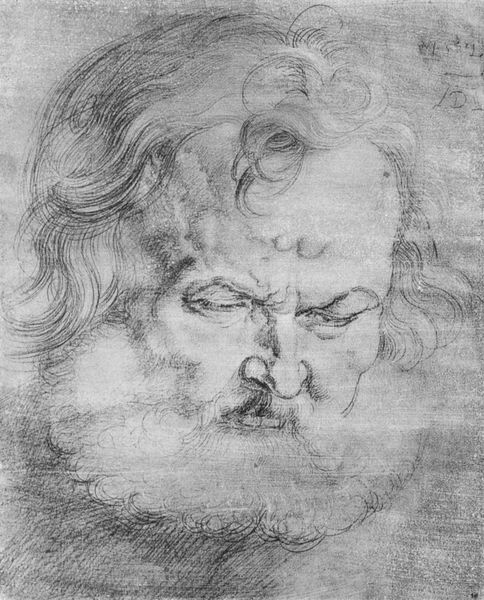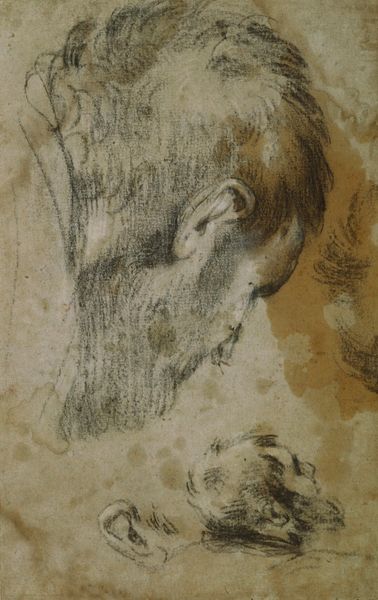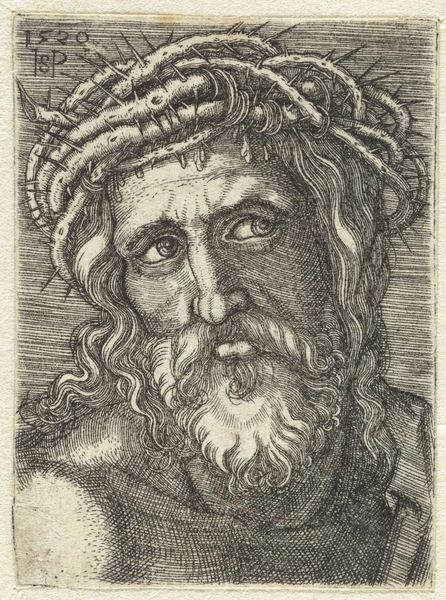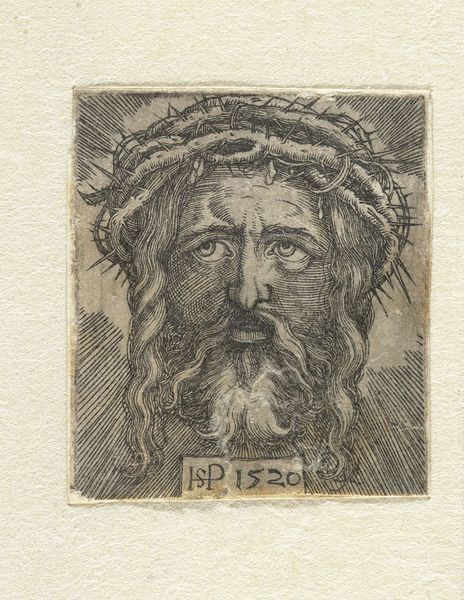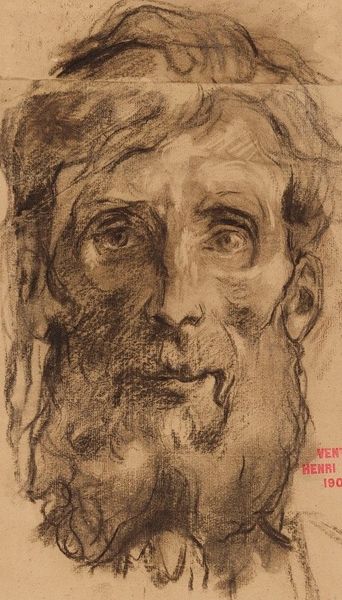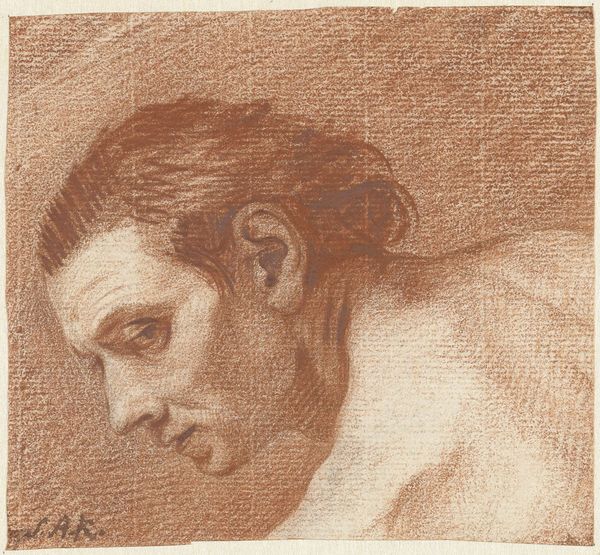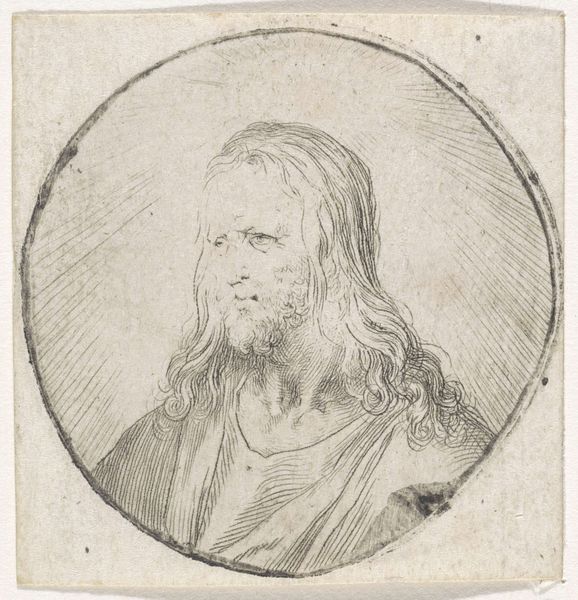
drawing, charcoal
#
portrait
#
drawing
#
neoclacissism
#
head
#
greek-and-roman-art
#
roman-mythology
#
mythology
#
portrait drawing
#
charcoal
Copyright: Public domain
Curator: Here we have Pierre-Paul Prud’hon’s intriguing study, “Head of Plutus, God of Wealth.” Editor: My first impression is one of stark solemnity. The muted charcoal rendering casts a serious and brooding mood, emphasizing the deep lines etched around his eyes. Curator: Absolutely. Plutus, though a god, appears burdened here. Notice the way Prud’hon employs charcoal and white chalk to illuminate certain features. It's masterful in its economy, guiding the eye through planes of shadow and light to reveal, or perhaps conceal, this deity's character. Wealth is so often equated with power, joy, and lightness of being, but Prud'hon's Plutus appears trapped. Editor: Precisely. The composition confines him, doesn't it? The artist used charcoal's tonal range and focused it entirely around this one central subject, a head shot. Prud’hon is clearly investigating how light plays over planes and angles. You can see it's almost like a sculptural study. Notice how his brow furrows? His beard rendered so texturally, almost coarse, conveying weight through the artist's method. Curator: It's compelling because Plutus wasn’t always depicted with this level of pained introspection. He originally was associated with abundance and generosity; the redistribution of resources. His presence, especially within the visual lexicon of ancient Greece, spoke to civic virtue and balanced wealth across the populace. I see instead how time changes the meaning associated with archetypes. Is Prud’hon reflecting on corruption perhaps? On hoarding? It is no longer enough to just consider his subject and model. Editor: An interesting hypothesis given that the lack of information available regarding the original intent here necessitates speculation based purely on structural evidence from the picture plane. The materiality itself supports this, you know. Prud’hon used charcoal which is often burned remnants of a substance, suggesting the consuming fire of ambition perhaps, not pure light. Curator: That's a resonant observation, and it makes the drawing's somber mood all the more poignant. Even when a god is at his apex he will be swallowed by this earth, this time of darkness. Editor: Quite. The raw marks and their cumulative power have shown me that this isn't a man celebrating wealth. He knows, by sheer expression and form, something's gone deeply wrong.
Comments
No comments
Be the first to comment and join the conversation on the ultimate creative platform.
